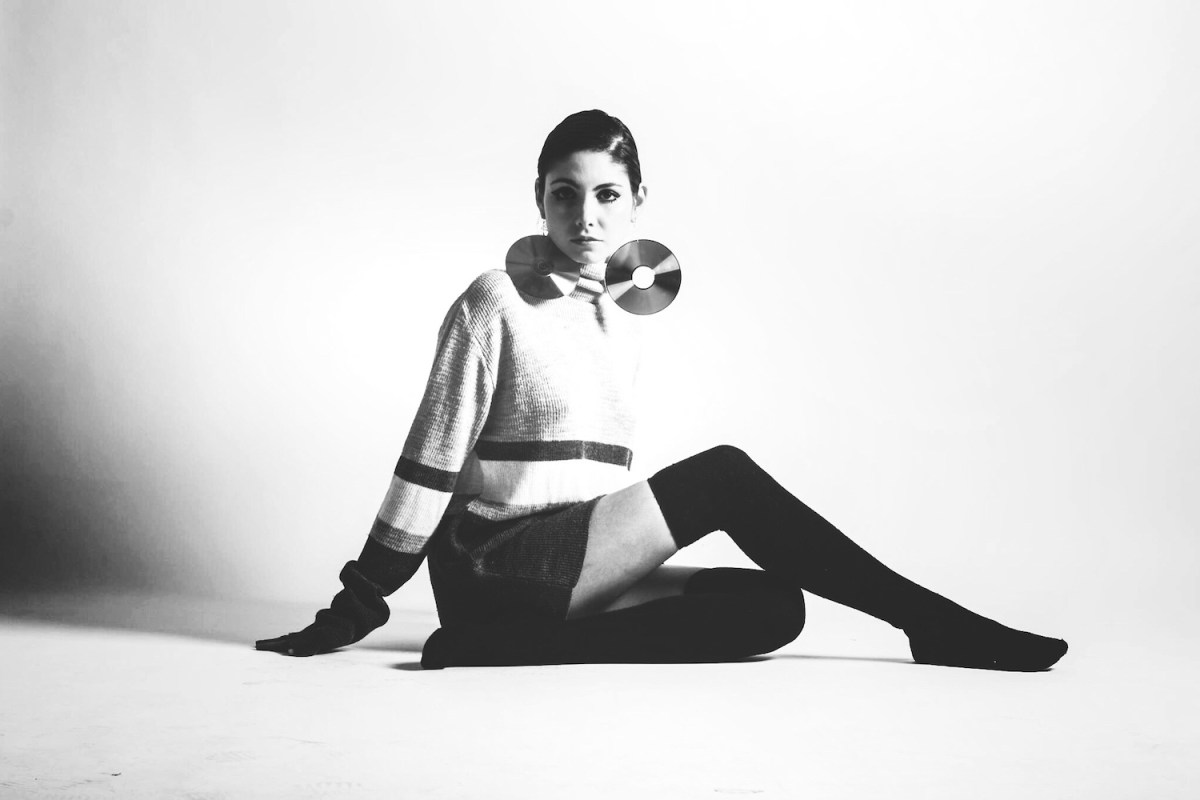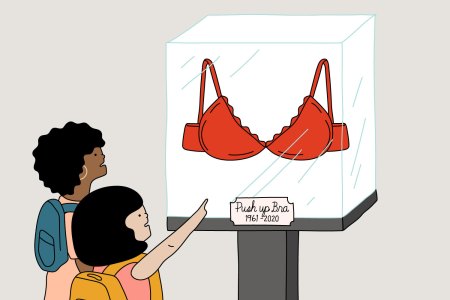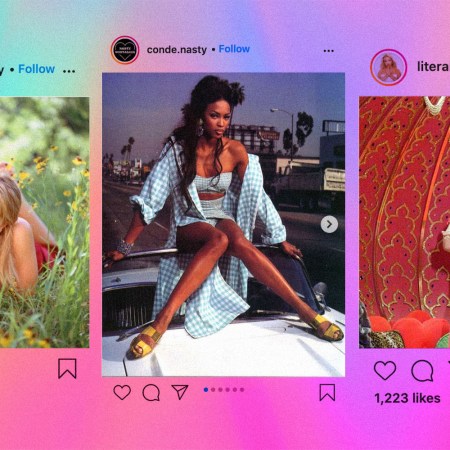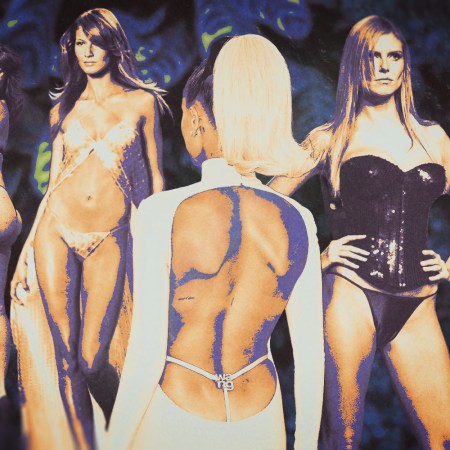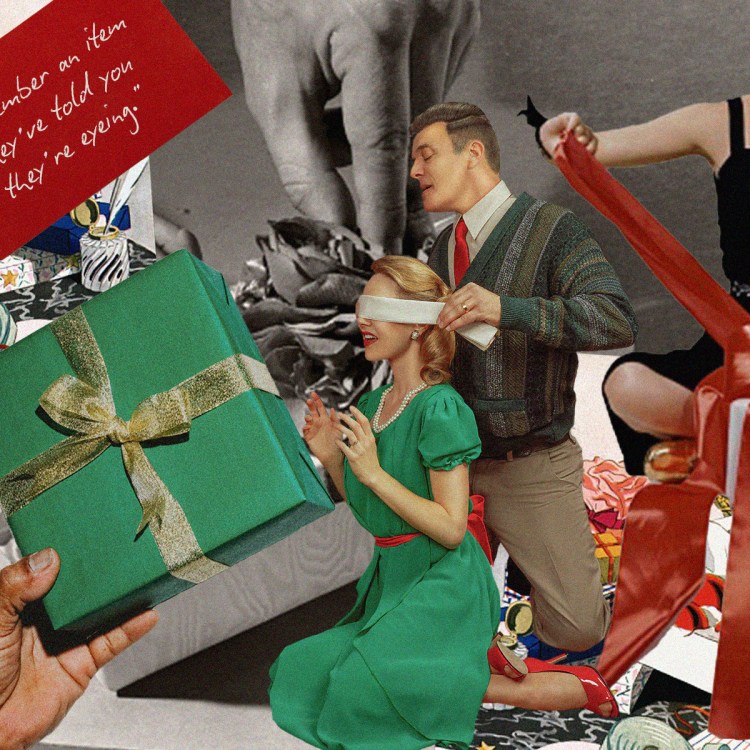The meaning of womanhood, according to Shania Twain, is a short skirt and the prerogative to have a little fun. And in the cultural imagination, the two often go hand-in-hand — or, more accurately, thigh-to-thigh. The miniskirt has lived many lives and has come to elicit quite an array of human emotion, from empowerment to arousal and, for some overprotective fathers, probably horror. With the passing of iconic British fashion designer Mary Quant, who died yesterday at age 93 and who’s often credited as the miniskirt’s original creator in 1955, the legacy of the high hemline is being reviewed as a feminist milestone in fashion. But more than just a middle-finger to the sartorial restrictions of generations past, the miniskirt has also become a fetish symbol, conjuring images of not-so-innocent schoolgirls and, perhaps if you’re a student of history, rubber bananas and subversive sexuality.
Fairly or not, the miniskirt can invoke frivolity — think Cher from Clueless, “Oops… I Did It Again,” Paris Hilton, giggling schoolgirls. But when then-25-year-old Quant first crashed onto London’s street style scene, her raised hemlines leveled a sharp political statement, offering women a type of clothing that wasn’t restrictive or modest. They gave women license to have fun getting dressed and dress for themselves instead of adhering to suffocating gender ideals grounded in rape culture and patriarchy — that if a woman bares her skin, she deserves abuse.
And while Quant certainly popularized the look of the miniskirt in the ‘60s, another pioneering feminist force had performed in France wearing a barely-there “skirt” three decades earlier. In La Revue Négre, a 1926 show about jazz culture, famed bisexual Josephine Baker — one of the world’s earliest sex symbols and most successful early Black American artists — danced the danse sauvage wearing an itty-bitty skirt of rubber bananas. The spectacle has been remembered by Vogue as “revolutionary” for having “clowned and seduced and subverted” the stereotypes of “the white male imagination.”
What Happened to the Push-Up Bra?
The ’90s and 2000s were all about extreme cleavage, but the push-up bra responsible for that look has all but vanished in recent years.In the wake of Baker and Quant, the high hemline eventually found a home in high fashion, where ‘60s-era models like Twiggy experimented with showing more and more skin. By the 1980s, the rah-rah cheerleader look had cartwheeled into the mainstream, opening the doors for ‘90s-era Julia Roberts to don thigh-highs and a micro-mini in Pretty Woman. And, of course, the schoolgirl uniform (complete with a low-rise waist and loads of midriff) had an undeniable chokehold on the early 2000s.
With all that history behind it, the miniskirt now plays an outsized role in sexual fantasies, whether it’s the naughty schoolgirl reprimanded by her teacher or the cheerleader sudsing up a car in a skimpy uniform. And while bare gams are incredibly sexy, the miniskirt is such a potent fetish symbol, not only because it shows off a pair of legs but because of what it represents. In an interview with The Guardian, Jenny Lister, curator of textiles and fashion at the Victoria and Albert Museum, suggested that Quant’s miniskirt permanently undermined the notion that women “should behave in a certain way,” cracking open a chance at reclaiming agency over one’s own body and expressing female sexuality in new ways.
The clothing item conveys so much. It’s both an embrace of hyper-femininity and a rebellion against it. It captures the youthful innocence, curiosity and sometimes deviousness of a school-age kid. And it screams back at that little voice in all of our heads that says baring skin is something to be ashamed of.
Whether you’re looking to get into shape, or just get out of a funk, The Charge has got you covered. Sign up for our new wellness newsletter today.
